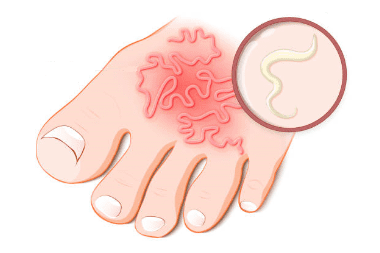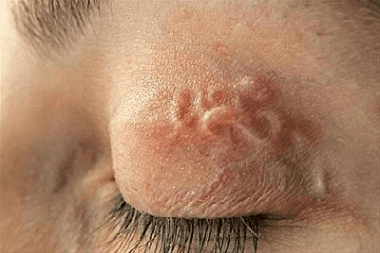Parasitic diseases >>>> Myiases
Myiases.

Myiasis are diseases from the group of parasitic infections spread by flies and gadflies that lay eggs and larvae in various tissues of the body. Eggs and larvae can be deposited on the skin (get from the surface of bed linen, clothing, earth), penetrating into the skin (into the mucous membrane) and penetrating into its deeper layers, get into the digestive tract with food, then into the bloodstream and spread with blood through various organs, crawl into the urethra and penetrate into the tissues of the genitourinary system.

Depending on the area of the lesion, the larvae distinguish between intestinal myiases, cutaneous myiases, ophthalmomyases, otomyases, urogenital myases, and others. Depending on the depth of penetration of the larvae, deep (malignant flowing) and superficial (benign flowing) myiasis are distinguished.
Myiasis can be caused by various types of dipteran larvae: housefly, blowfly, housefly, cheese fly, fruit fly, gadfly, etc.
Myiasis signs:
- Intestinal myiasis is accompanied by a painful symptom in the abdomen, due to inflammation of the gastric mucosa, nausea, vomiting, and upset stools. With a protracted course of the disease, weight loss is possible.
- Cutaneous myiasis cause foci of suppuration, boils, abscesses, fistulas, thickening of tissues in the places where the larvae are introduced, a feeling of creeping creeps, itching.
- Urogenital miasms are accompanied by pain in the urethra, urinary disorders.
- Ophthalmomyiasis is accompanied by conjunctivitis, the development of iridocyclitis, ulceration, lacrimation, visual impairment.
- Myiases, as a result of which the larvae penetrate into the sinuses, to the membranes of the brain, may be accompanied by headaches, fever, and edema.
Treatment of myiasis is based on taking antiparasitic drugs, laxatives, washing the area of introduction of the larva with antiseptics, oil solutions. Surgical removal of larvae is shown if conservative treatment is impossible.

Read

Read



























